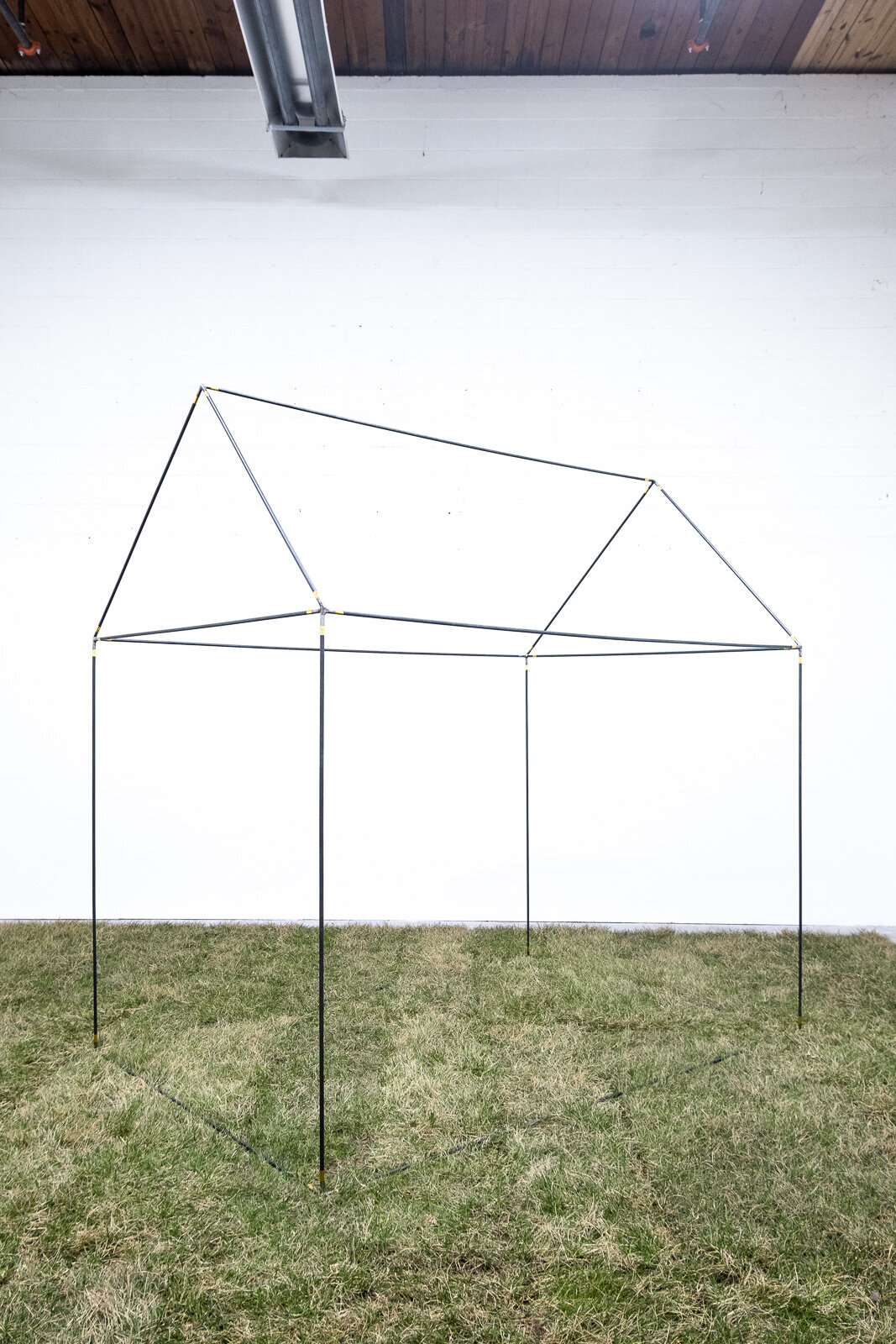Open Floor Plan
Spring 2021
Open Floor Plan includes sculpture, installation, photography, and time-based media shown in multiple locations across several months. The works orbit the multifaceted interpretations of home, and how identity and representation are intrinsically linked to place. This body of work is intended to spark conversation about displacement, gentrification, and diaspora, and the environmental implications and socioeconomic concerns of one’s relationship to community, housing, and access to resources.
Click the links in the menu or the show titles on this page for information and documentation of each exhibition and individual installations. Affordable Housing is first to open, running March 1-15, 2021 at Revolve in Asheville, NC.
In addition to the works on view at each location, in-person and digital visitors are invited to fill out a housing survey, and if able and moved to do so, are encouraged to make donations of supplies, funds, time, or resources to their local mutual aid solidarity network benefiting individuals experiencing houselessness and those disproportionately affected by COVID-19. For more info about the history of de jeure segregation, mutual aid, dual power, wealth reclamation, and other non-hierarchical methods of community care, please see the links below.
Resources:
Antiracist Praxis, American University - Segregation and De Facto Segregation by Olivia Ivey
The Color of Law, A Forgotten History of How Our Government Segregated America
Affordable Housing - Festival of Shelters and the Special Field Order No. 15
500 sq ft sod, steel, gold foil tape
at Revolve/Ramp Gallery in Asheville - March 1-15 2021
open to the public, masked, noon-8p
821 Riverside Dr, Asheville, NC 28801
(enter through through French Broad Chocolates)
New Real Estate Now Available, on the grounds of the WCU campus near the Bardo Arts Center - April 1 - May 15
Custom, Light-filled, Historic inside the WCU Fine Art Museum - April 9 – May 15
other indoor and outdoor works and locations to be announced.
A Housing Survey is available at Affordable Housing or digitally. The questions center on rent/income% and availability of resources. Positionality is asked for but not required, and responses will be anonymized. Data will be used to create infographics and dataviz about the realities of housing in the region.
Asheville Survival Program information and supply donation drop is part of Affordable Housing. Visitors are invited to donate supplies in gallery, and venmo direct contributions to @avlsurvival / donate directly to them once the show closes.
“Among the rarest things is a white artist making a work about whiteness. Enter @lydiasee.studio, whose 2021 "Affordable Housing" was recently on view @revolveavl.
.
It featured "Festival of Shelters and the Special Field Order No. 15," the outline of a house in steel, a form abstract and empty enough to prompt the viewer to muse on how to fill it in. See's sculpture sat on sod and asked, 'What makes a place a home?'
.
About 10 feet away, two racks of paint samples turned the softballs posed on the field into a more pointed question: who gets to have a home? Each of the paint chips was a different shade of white. Suddenly See's idyll became a call for redress.
.
Oh btw, Union Gen. William T. Sherman issued the “Special Field Orders No. 15” of See's title in 1865. Sherman's order confiscated land from treasonous white Southerners and provided for its dispensation to formerly enslaved Black men and women. Later, white supremacist President Andrew Johnson returned these lands to their previous owners, a denial of both economic opportunity and a certain justice to men and women had joined the Union Army and fought for both their freedom and the Union.
.
Later, again: across the 20thC and especially after WWII, the US denied soldiers and their families who were not culturally constructed as white access to both housing and economic opportunity. Federal programs, such the extension of federal loans to whites on the explicit condition that they not sell their houses to Black buyers, and the 1949 Housing Act, which enforced segregation on the nation's most popular housing sector were explicitly constructed around the imposition and expansion of white supremacy. States and home-owners groups followed with policies such as the imposition of racially restrictive covenants on houses and neighborhoods. Today the average white family has 41 times the wealth of a Black family.
.
See has offered literature on some of this. But it was the paint chips -- installed serially on racks in a manner that recalls the seriality of post-war developments such as CA's Lakewood and NY's Levittown – that used repression's vocabulary and form to say it all.”
Tyler Green



